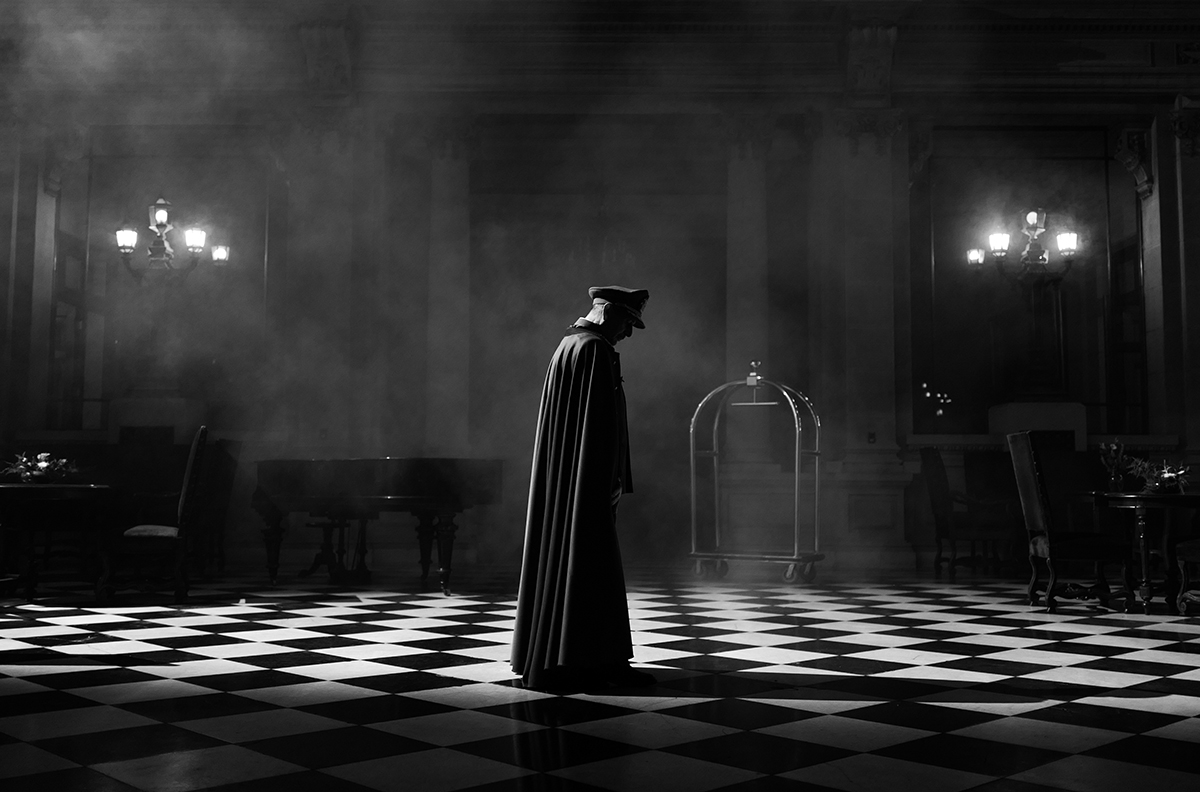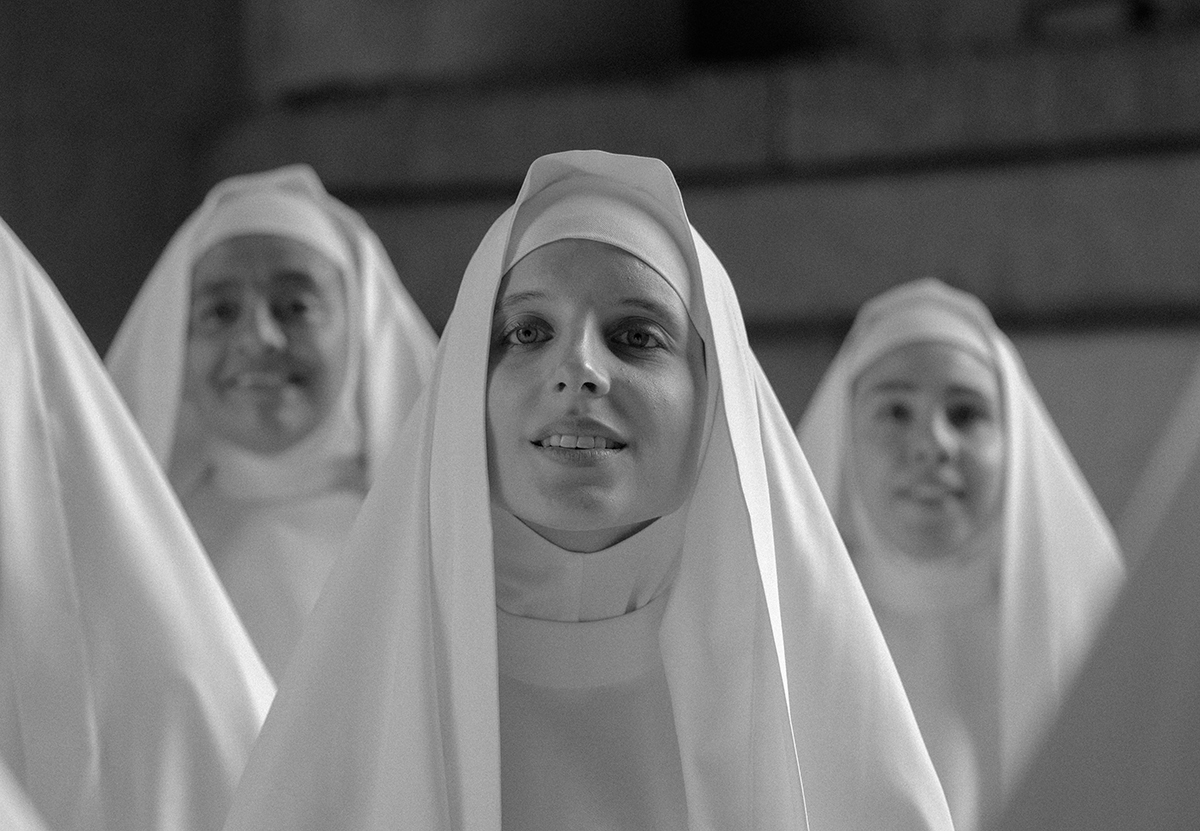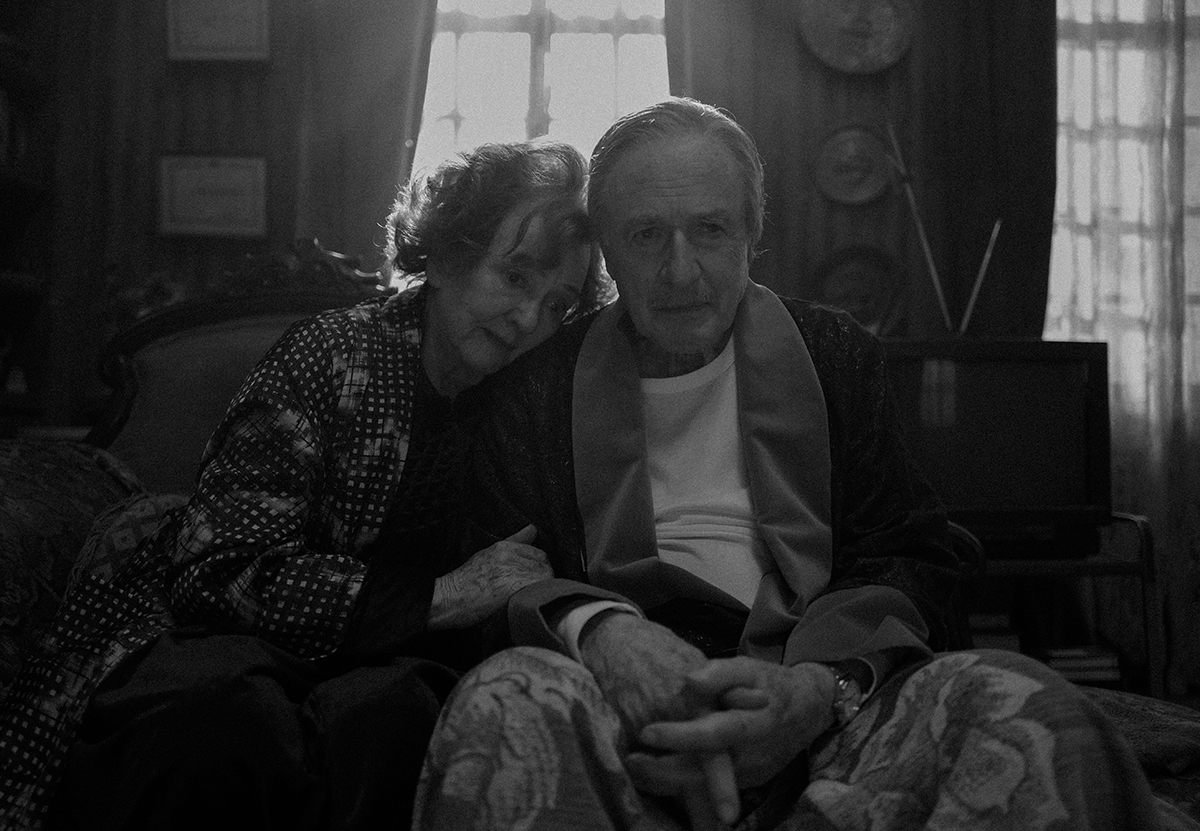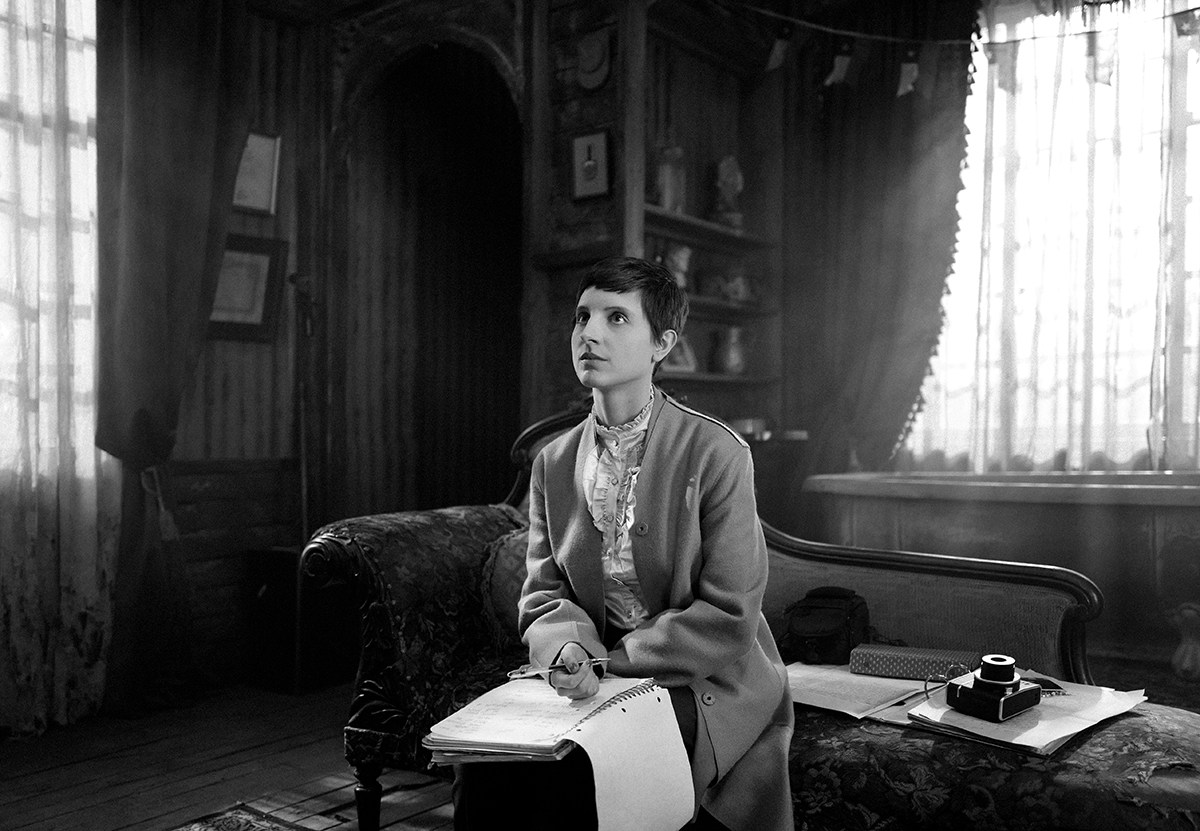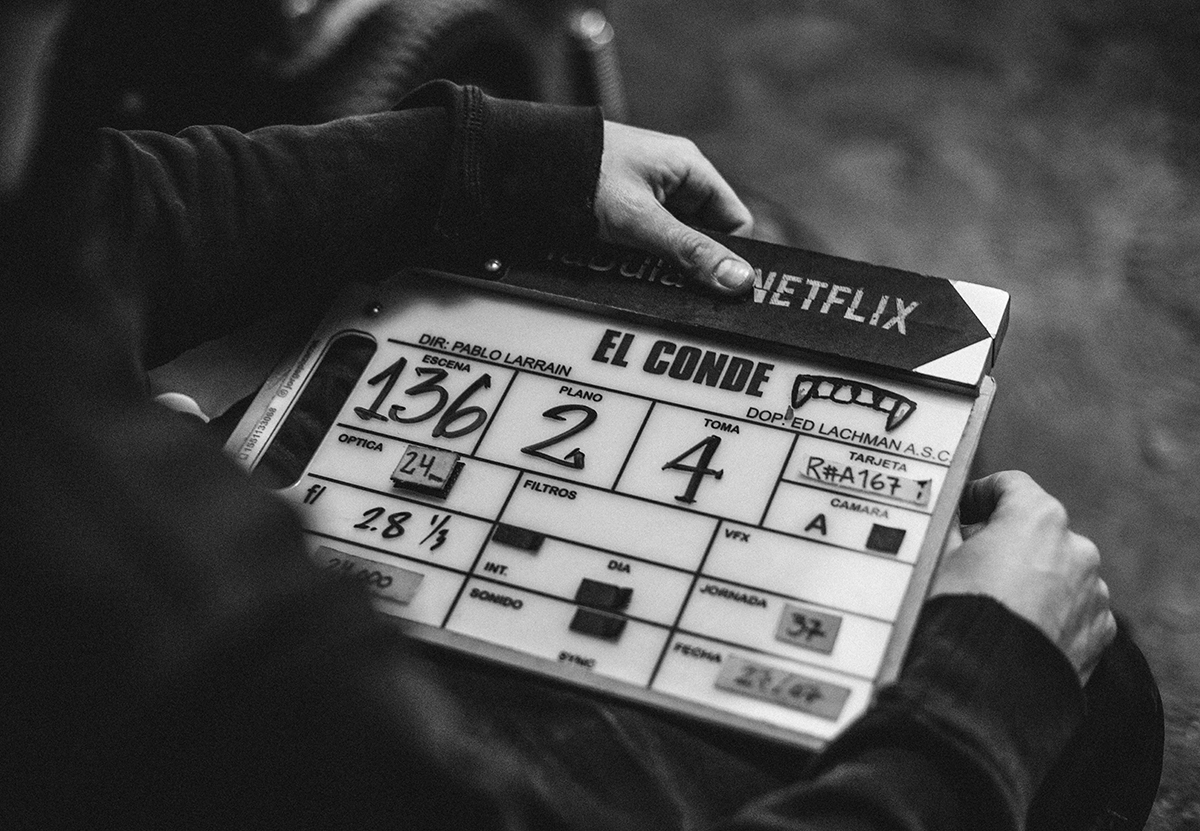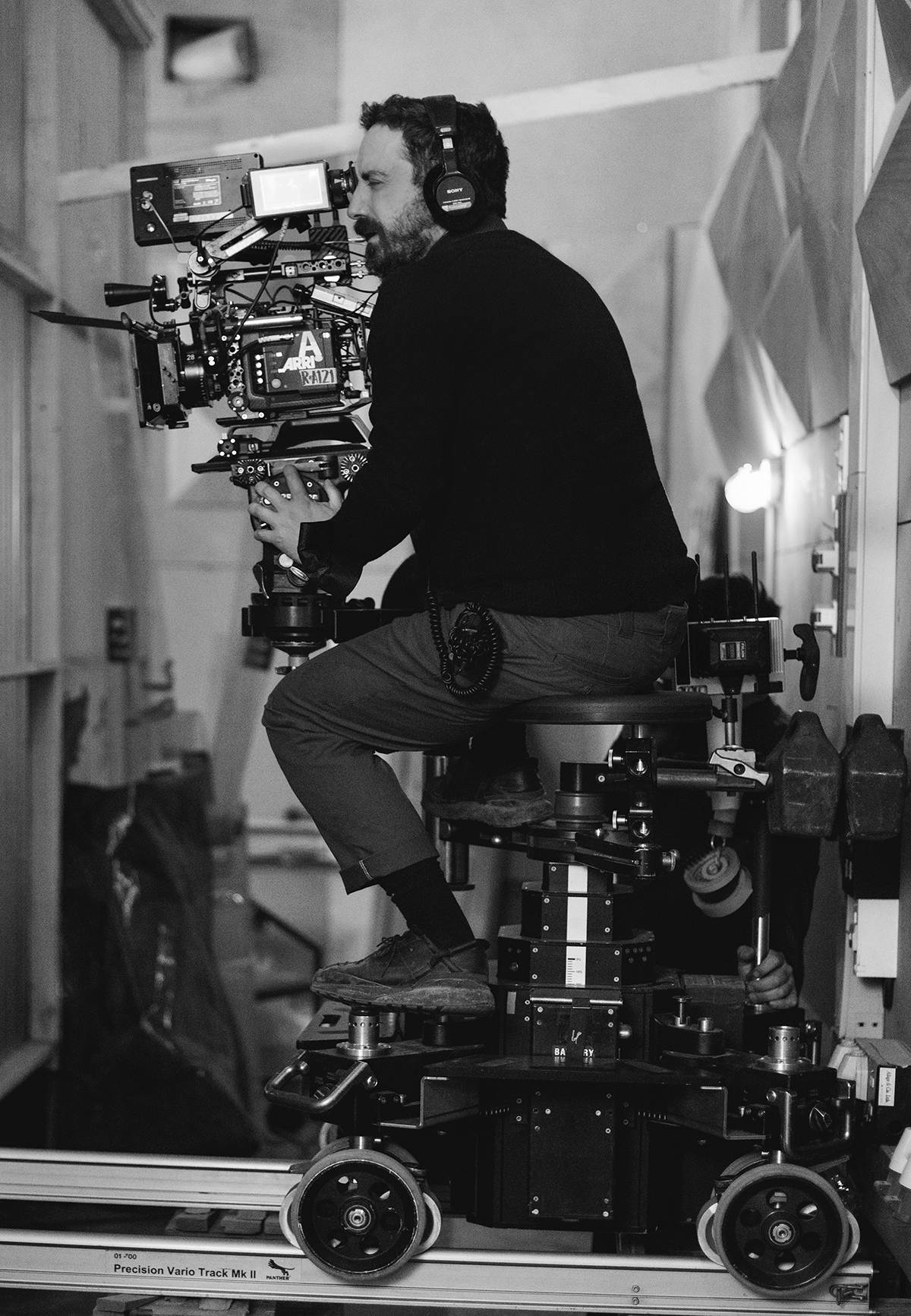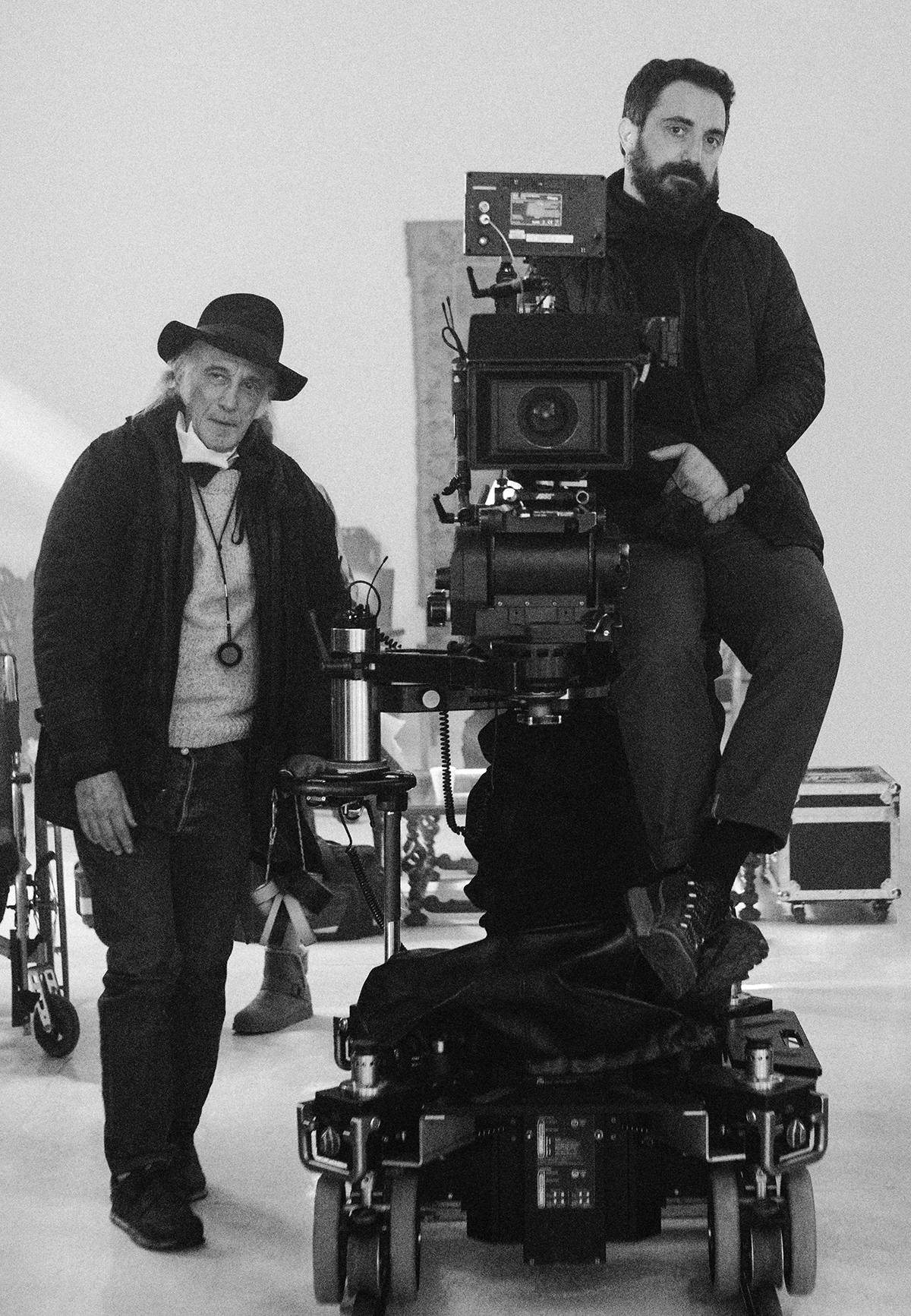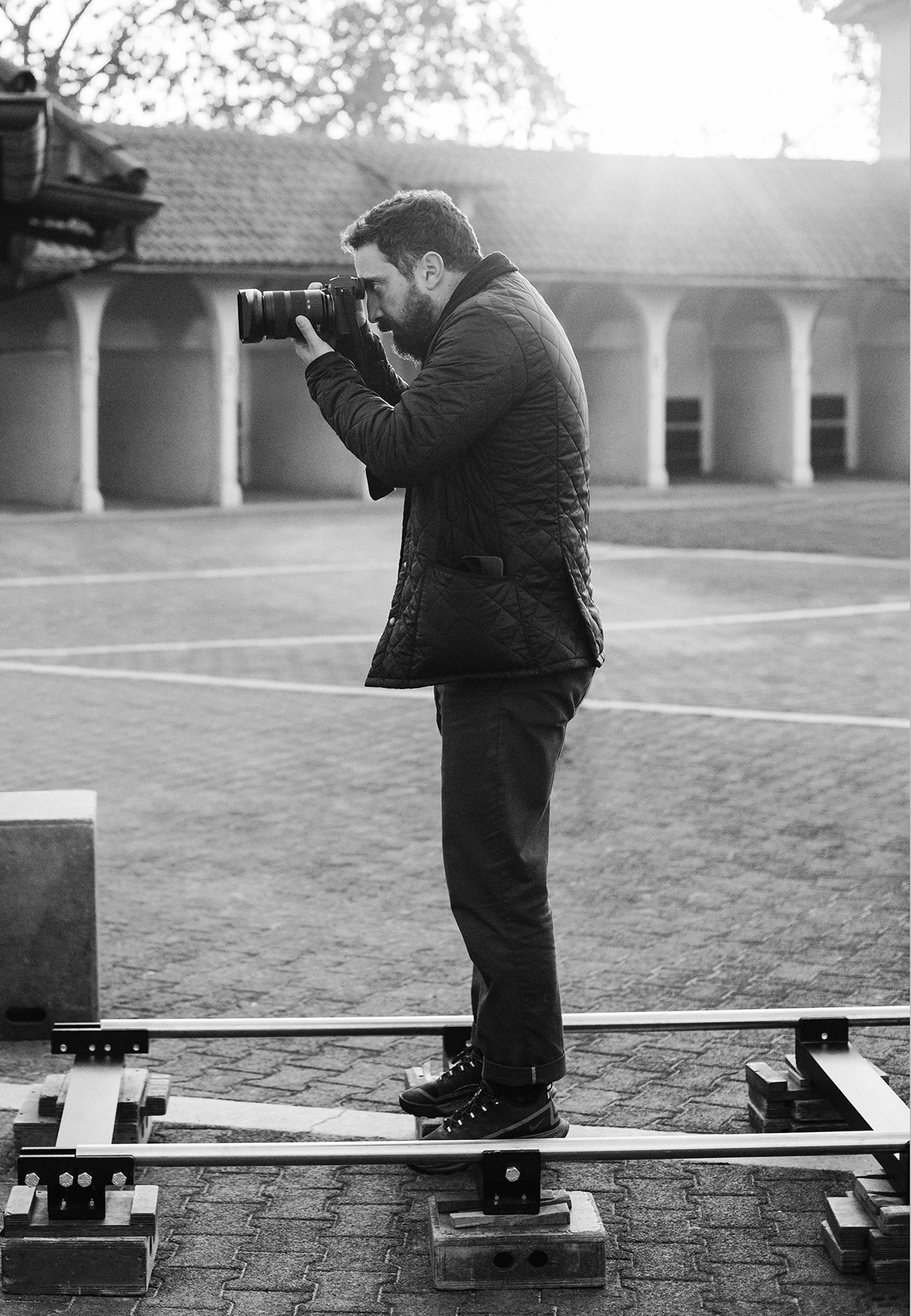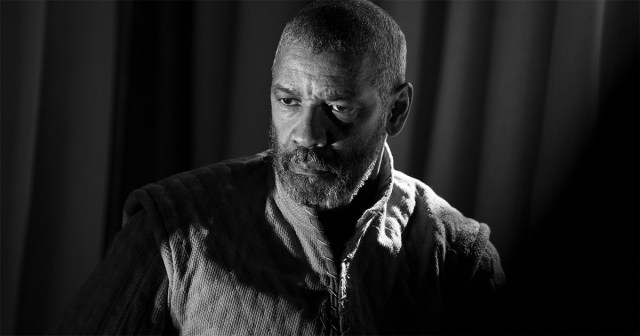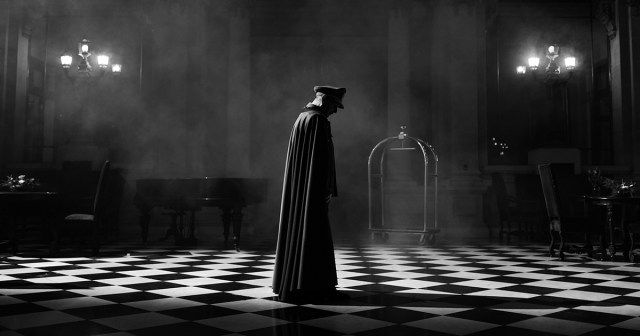
TL;DR
- Pablo Larraín’s new film ‟El Conde” satirizes Chilean dictator General Pinochet as an immortal vampire as a way for the country to come to terms with its past.
- A natural artistic choice was to shoot in black-and-white, as an ode to the early days of on-screen vampires, notably Carl Dreyer’s Vampyr.
- ARRI made an LF monochromatic camera specifically for the project, arriving ten days prior to the first days of shooting in Chile.
Satire was probably the only way to face up to a dictator like Augusto Pinochet.
The Chilean general who took power in a U.S-backed coup in 1973 died in 2006, still with the blood of thousands on his hands. In new film ‟El Conde,” Chilean director Pablo Larraín turns the story into a stomach-turning tragicomic melodrama-horror movie.
“The chain of thought involved the fact that Pinochet died in complete freedom — and with the most vile and absurd impunity,” Larraín told The Hollywood Reporter’s Patrick Brzeski. And that impunity made him eternal in a way — we still feel broken by his figure, because he’s not really dead in our culture.
Veteran Chilean actor Jaime Vadell stars as Pinochet, who is reimagined here as a 250-year-old vampire who faked his own death and absconded to a dilapidated estate in the Patagonian countryside.
Argentina suffered a similar fate when a military junta took power, but civil society was able to bring justice to bear on some of its members in a story filmed by director Santiago Mitre as “Argentina, 1985” last year.
“We never had that in Chile, so his figure remained very vivid and alive,” Larraín says. “So, that idea took us to the figure of the vampire, and that satire was the only way to approach him.”
Larraín describes his film’s Pinochet as “an absurd superhero of evil” and says he knew early on that he wanted the film to be shot in black-and-white.
A precedent for using dark humor and black and white was set for Larrain by Stanely Kubrick’s 1964 classic ‟Dr. Strangelove” as he explained to THR: “One of the smartest things Kubrick does in that film is how the satire and farce can help you face those characters without creating empathy.
“When you have a protagonist who is played by such a sensitive, interesting human being like Jaime, the big danger is that you could end up feeling empathy for him. It would be completely immoral and dangerous to do something like that. So, the satire, absurdism and filming in black and white allowed us to have the right distance from these people.”
He expounds on the decision to shoot black and white in conversation with Bilge Ebiri at Vulture: “Black and white is not only beautiful and poetic and artistic, but also creates a parallel reality. It’s a fable that you could observe from afar, and that allows you to be dark, be funny, talk about this difficult and painful subject in a way where if you are able to smile a little bit, maybe there’s a strange and awkward form of healing.”
Cinematography
In conceiving the look of the film, Larraín turned to cinematographer Ed Lachman ASC, who has been Oscar nominated twice on two period films with Todd Haynes, “Far From Heaven” and “Carol.”
Watch the ASC’s interview with Lachman here.
They talked about landmark silent horror films like F.W. Murnau’s 1922 “Nosferatu” and Carl Theodor Dreyer’s 1932 “Vamypr,” as well as work by photographers from different eras including Sergio Larraín, Fan Ho and Maura Sullivan.
Larraín fought not only for the movie to be in black and white but to actually shoot it in black and white, a rarity in the digital age in which studios insist on color cinematography that can later be desaturated in post-production.
“The reason producers do it that way is because then they can always fall back on the color if they have markets that they can’t show it in black and white,” explained Lachman to IndieWire’s Chris O’Falt. “The contrast and the saturation, the subtlety of mid-range in the blacks and whites, aren’t the same [and] that’s why I think [‘El Conde’] really has a different look than a number of black and white films over the last few years.
“When you can actually shoot in monochromatic, you can reach back to black and white filters to modify the contrast and the mid-tones.”
A Time-Sensitive Custom Sensor
Knowing that Larraín also wanted to have the mobility of a light camera that could be used on a technocrane (to facilitate the film’s flying scenes), Lachman needed ARRI to develop a black and white sensor for its smaller (but still large format) camera, the ALEXA Mini LF.
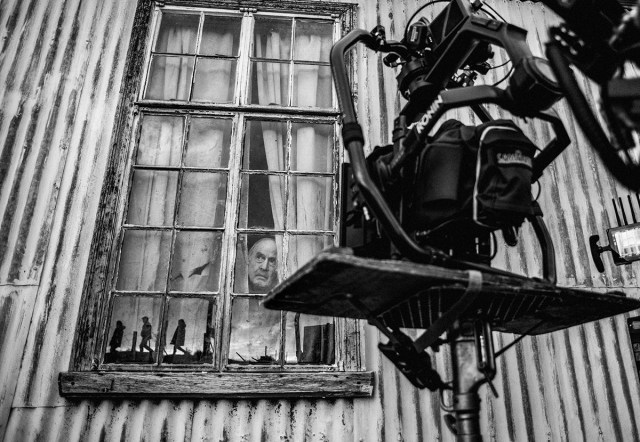
ARRI’s large format Alexa 65 has such a monochrome sensor but the camera body would be too large to use while the Alexa XT also with new b/w sensors didn’t meet Netflix’s 4K mandate. Lachman could have chosen to shoot with a RED camera and its black and white Helium sensor (used to shoot Netflix Oscar winner “Mank” in 2020), but it seems that Lachman preferred to push ARRI to develop a new version of its cameras.
Per IndieWire, the problem was less ARRI’s willingness to build a new camera — in theory, its color scientists were confident it could work — and more that Lachman’s request came two months before the start of production, which is less time than it had taken to develop previous prototypes.
Luckily, according to ARRI’s Marko Massigner and Manfred Jahn, creating the new chip came together quicker than anticipated, and they were able to deliver three working cameras in time for “El Conde.”
Building on his vision, Lachman used lenses retrofitted with vintage glass from the 1930s and modified to work on the ARRI camera. This unique combination of equipment was then used with Lachman’s own patented EL Zone System, which employs concepts utilized by photographer Ansel Adams to control different exposure values throughout an image.
Cined has more details on the development of the new Alexa which also notes that the re-housed Baltar lenses were the same glass that was used to shoot classics “Citizen Kane” and “Touch of Evil.”
Lachman and Larraín have known each other for several years, but this is the first feature they‘ve worked on together.
“Ed can create a very particular visual poetry, but he never loses the focus on the narrative,” Larraín told Mark Olsen at Variety. “That is very important because sometimes you see beautifully photographed films that don’t have a strong and powerful narrative. It was often very moving to see the images he was creating.”
Unusually, the director himself operated the camera for the entire shoot.
“It helps me to be closer to the actors,” says Larraín. “I’m too anxious to be seated at a monitor. Even when I’m not operating, I’m standing and working and walking. I can’t just see the world created in front of me. I have to be right there. You’re part of the process.”
Vulture critic Bilge Ebiri, judged the film “an unrepentantly gore-filled horror flick… a piece of agitprop provocation [that] might be the most perverse project Netflix has ever signed off on.”
Nick Vivarelli for Variety says, “The film is somehow sparse and flamboyant at the same time; viewers may feel conflicting impulses of being charmed and repulsed.”
“El Conde” is streaming on Netflix now.



